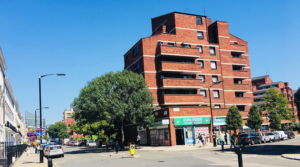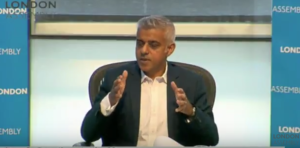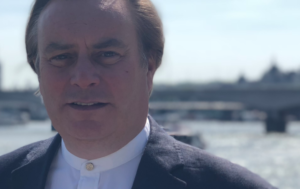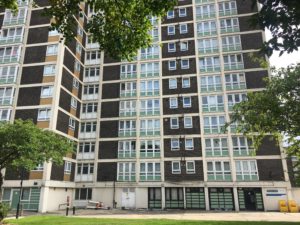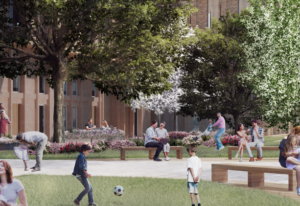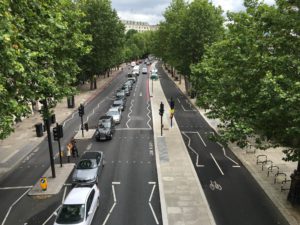The newly-formed planning committee of Labour-run Greenwich Council decided recently to block two housing schemes in the borough which between them would produce over 1,000 new homes and both which reached Sadiq Khan’s 35% affordable “threshold” requirement, designed to speed housing delivery.
As Estates Gazette reported, both a 771 home Charlton Riverside scheme and a 272 home Harrow Manorway project in Abbey Wood were turned down unanimously, despite council officers recommending that permission be granted. The London Mayor has the power to intervene in the affair by overriding Greenwich and determining the two planning applications himself. In other words, he can see to it that those 1,000 new homes get built. Will he? And if not, why not?
There were local objections to the style, height and scale of the Charlton plans, which were obviously relevant and may be very valid. Even so, the rejection presents a challenge to Mayor Khan as he gets gets into the second half of his four year term and overall housing supply falls. Two threads of criticism from within the overlapping spheres of London’s housing sector and its local authorities are now well established. One is that he is too remote from senior colleagues within City Hall and important partners elsewhere, resulting in too little action on the ground. The other, related to the first, is that he is too pre-occupied with political positioning to say what needs to be said and do what needs to be done in order to get housing supply moving in the ways he says he wants.
For these critics, who include generally supportive Labour borough leaders, the Mayor is failing to make the best use of either his considerable “hard” power to see that housing projects that meet his strategic requirements come to fruition or his important “soft” power, which derives from hands-on involvement with decision-makers, housebuilders and financiers.
A contrast is sometimes made with the two previous Mayors. Ken Livingstone was attacked by media enemies for his reliance on an inner circle of close advisers (“Ken’s Cronies” etc), but others valued that closeness because the circle was comprised of trusted policy directors – these days called deputy mayors – who they knew spoke directly for their boss. This meant they usually knew where they stood with City Hall, which matters a lot to boroughs and housing providers when making planning and investment decisions. And Livingstone himself is still praised in surprising quarters as an excellent dealmaker, including with people who were not natural allies.
With Boris Johnson, who was considered somewhat more “outward facing” – a polite euphemism for attention-seeking – and far less interested in the detail of policy delivery than Livingstone, reassurance took the form of, firstly, the late Sir Simon Milton and then Sir Edward Lister, both of them hugely experienced in London local government and how planning and housing finance in the capital work. They too were regarded as mayoral representatives on Earth, speaking for and to Johnson directly and frequently.
With Mayor Khan, though, things are said to be rather different. Those uneasy with the workings of his mayoralty regard his more political advisers, such as Patrick Hennessy, David Bellamy and Jack Stenner, as his innermost circle, with his deputy mayors – those responsible for policy formulation and delivery, such as James Murray and Jules Pipe – of secondary importance in the organisational hierarchy. Whilst Murray and Pipe are highly regarded in local government and housing development circles, a feeling that the Mayor is rather detached from them means they are not perceived as bearers of the mayoral will in quite the way their predecessors were.
The story goes that this can mean that borough politicians feel unsure about backing housing schemes because they aren’t sure they will have the Mayor’s backing for them if they need it. The same goes for some housing and other property companies. Housing associations are said to be pleased with their relationship with City Hall with regard to the Mayor’s affordable housing programme. But, whatever they say in public, they are not happy about his backing for ballots of residents before he will help fund estate regeneration programmes.
And other types of housing investors have concerns too. Property developers and overseas investors are, of course, held by some to be villains of the capital’s housing crisis story, but the reality is far less black and white. As research for the Mayor has underlined, they actually finance much of the “affordable” new housing built in the capital, along with the important build-to-rent sector. It is a fact of modern life that commercial developers can easily move their millions to whatever location on the planet suits them best. Knowing they have the personal, eye-to-eye support of the the city’s Mayor can make an important difference to decisions about whether that location is London.
The backdrop to all this is, of course, the condition of the Labour Party in the capital and, indeed, nationally. It has for some time been the standard wisdom that Khan – like Johnson, but unlike Livingstone – regards the mayoralty as a stage of a longer career journey and is behaving accordingly. Quite naturally, he wants his forthcoming re-selection process to go as smoothly as possible and doesn’t want to get on the wrong side of London’s heavily Corbynite London membership, which has already impeded housing delivery – including of new affordable homes – in Labour-run Haringey and Lewisham. His U-turn over estate ballots is seen as a capitulation to Corbynite pressure and its ideological Grand Narratives. Looking ahead and more widely, he has no current interest in becoming deemed an Enemy of Jeremy by Momentum and the seething alt-left media.
Well, not many ambitious and practical Labour politicians do and it’s not hard to see why. But with housing delivery dipping and London’s population still growing towards nine million and beyond, Khan’s response to that rejection of 1,000 news homes in Labour-run Greenwich is going to be closely watched by many with the means and the desire to supply many thousands more.
 Guy Mannes Abbot, writing in the Westminster History Review, puts the site of the fort further down Vauxhall Bridge Road where the prize-winning council estate Lillington Gardens Estate now is (see main picture).
Guy Mannes Abbot, writing in the Westminster History Review, puts the site of the fort further down Vauxhall Bridge Road where the prize-winning council estate Lillington Gardens Estate now is (see main picture). 
